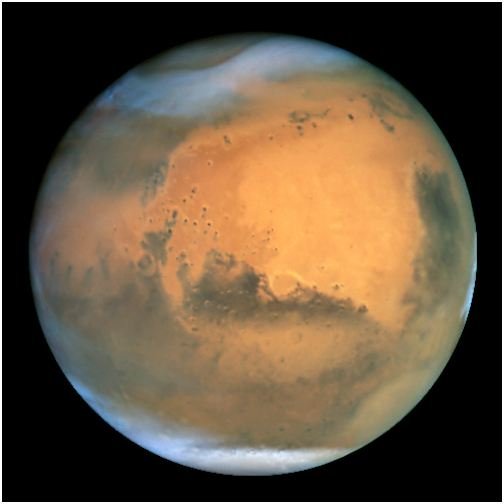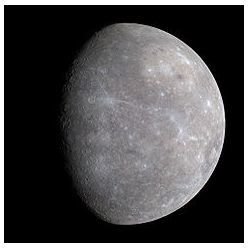The Geology of the Other Small Planets in Our Solar System: Mercury, Venus, Mars and the Dwarf Panets
About Planetary Geology
Planetary geology, also called astrogeology, is the study of the geology of other planets. Aside from applying many of the same methods of studying geology on Earth, an important additional component includes counting the number of impact craters, comparing their sizes, and estimating their ages. Planetary geology covers all celestial bodies with solid parts, including dwarf planets like Pluto and Ceres, notable moons like Earth’s moon, the Galileans around Jupiter, Titan around Saturn, and Triton around Neptune. Small solar system bodies like asteroids and comets are also included. Most of the current research focus is on the geology of the solar terrestrial planets - Mars, Venus, and Mercury, sometimes including Earth for comparison.
Planetary geology would also cover terrestrial planets in other star systems, but at present we can’t actually see them well enough to study them.
The Geology of Mars

Mars, the fourth planet from the Sun, is probably the most-studied planet after Earth because it’s the most likely to have liquid water and therefore life (as we know it). Numerous spacecraft have visited since the Mariners of the 1960s, including fly-bys, orbiters, landers, and rovers.
Geologically, the rocks at the surface of Mars are primarily mafic igneous (example: basalt), with lots of past volcanic activity. Mars has the tallest volcanoes in the Solar System; Olympus Mons is nearly three times taller than Mount Everest on Earth. There are signs that Mars used to have plate tectonic activity (earthquakes) and a magnetic field as driven by a molten core, but these disappeared nearly 4 billion years ago.
The Martian surface is covered with a thick layer of iron oxide dust (hematite, rust), which gives the planet its reddish color and makes it hard to study what lies underneath. Although liquid water can’t presently exist on the surface of Mars, it may exist farther down, and there are signs that Mars once had rivers, streams, and maybe even oceans.
The Geology of Venus

Venus is the second planet from the Sun. Its best-known feature is a very thick atmosphere that completely obscures its surface and crushes exploratory probes launched into it with its very high pressure. With 95% carbon dioxide in the atmosphere, temperatures at the surface are also extremely high, averaging 450 degrees C (850 degrees F). The most comprehensive data about Venus is from the Magellan mission between 1990 and 1994, which used radar to map 98% of the planet’s surface.
Venus has no plate tectonic activity, but does have many of the features seen on Earth that are caused by active tectonics, such as faults, folds, volcanoes, mountain chains, and rift valleys. On Earth, these are caused by plates moving around on top of a relatively fluid layer of the crust (the lithosphere); on Venus, all the surface deformations seem to be caused by movement of the mantle. The entire surface of Venus is very young - within half a million years old or less, not very long compared to nearly 5 billion years for the age of the Solar System. The surface is dominated by massive volcanoes shaped like giant pancakes and expansive fields created by lava flows.
The Geology of Mercury

Mercury is the planet closest to the Sun, which makes it very hard to study for two reasons: the Sun’s gravity makes it hard for probes to stop instead of pass at high speed, and the Sun is a source of intense heat and radiation. Most of what we currently know about Mercury is from the Mariner 10 spacecraft in 1974-1975, though the MESSENGER spacecraft is in the process of collecting new data.
Mercury looks a lot like the Moon at first glance - dark gray with many craters. The craters are overlain with compression folds, which suggests that Mercury underwent some shrinkage as it cooled, causing its surface to buckle. Tidal forces from the Sun (17% stronger than on Earth due to Mercury’s closer proximity) have also contributed to Mercury’s surface features.
Geology of Other Planets: The Dwarfs
A dwarf planet is a planet in the solar system that has enough mass and gravity to become spherical, but is not massive enough to clear its orbital path of other astronomical objects. Dwarf planets include Ceres in the asteroid belt, Pluto in the Kuiper belt, and Eris within the scattered disc. There are others, and new ones are being discovered all the time.
Ceres, the largest astronomical body in the main asteroid belt between Mars and Jupiter, accounts for about a third of the belt’s mass. It appears to have a rocky core surrounded by an icy mantle, and has a number of permanent light and dark features on its surface. Some of those might be craters. The planet as a whole is probably not geologically active as it would’ve lost all of its original heat by now.

Pluto was the 9th planet in the Solar System until astronomers discovered lots of other astronomical objects that looked just like it in the same area, collectively called the Kuiper belt. The best images (from the Hubble Telescope) show a surprisingly varied surface of light and dark areas, covered with frozen nitrogen and trace amounts of frozen methane and frozen carbon monoxide. Based on its density, it’s assumed to have a rocky core with an icy mantle.
Eris, slightly larger than Pluto and farther away, is assumed to be similar.
Compared to the geology of Mars, Venus, and Mercury, we don’t know much about the dwarf planets because none have yet been visited by our space probes. However, NASA’s Dawn spacecraft is currently en route to the asteroid belt and will reach Ceres in 2015. Likewise, NASA’s New Horizons spacecraft is scheduled to make a flyby of Pluto in 2015 on its way into the Kuiper belt.
References
- USGS Astrogeology - Mars
- Mars, Venus, Mercury, and Pluto images from NASA. Venus image processed to real-color by Ricardo Nunes.
- USGS Astrogeology - Pluto
- USGS Astrogeology - Venus
- USGS Astrogeology - Mercury